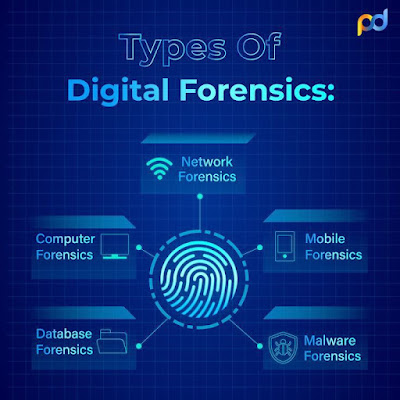The role of Technology :
The role of introducing technology can vary depending on the context and purpose, but in general, it can have several key benefits and implications:
Increasing efficiency: Technology can automate repetitive tasks, reduce errors, and streamline processes, leading to faster and more accurate results.
Enhancing productivity: By providing tools and resources that improve communication, collaboration, and information sharing, technology can help teams work more effectively and achieve better outcomes.
Enabling innovation: New technologies can enable novel ideas and approaches that were previously impossible or difficult to realize, leading to new products, services, and business models.
Improving customer experience: Technology can help organizations better understand and respond to customer needs and preferences, providing personalized and seamless experiences.
Generating new data and insights: Technology can collect and analyze data from various sources, enabling organizations to gain new insights and make informed decisions.
The role of Technology in countering extremism and terrorism outlines
Technology can play a crucial role in countering extremism and terrorism by providing tools to monitor and disrupt extremist activities, and by promoting alternative narratives and ideas that counter extremist ideologies. Here are some specific ways in which technology can be used to counter extremism and terrorism:
Monitoring online activity:
Social media platforms and other online forums can be used by extremists to recruit, radicalize, and plan attacks. Technology can be used to monitor online activity and identify individuals and groups who are engaged in extremist activities. This information can be used to disrupt their activities and prevent attacks.
Developing algorithms:
Machine learning algorithms can be used to identify patterns in online activity that may be indicative of extremist behavior. These algorithms can be used to flag suspicious activity and alert authorities to potential threats.
Disrupting extremist communications:
Technology can be used to disrupt extremist communications by taking down websites and social media accounts used by extremist groups, and by blocking their ability to communicate with each other.
Promoting counter-narratives:
Technology can be used to promote alternative narratives and ideas that counter extremist ideologies. This can be done through social media campaigns, online forums, and other digital platforms.
Supporting law enforcement: Technology can be used to support law enforcement efforts by providing tools to track and monitor individuals who are suspected of engaging in extremist activities.
Enhancing cybersecurity:
Cybersecurity measures can help prevent extremist groups from using technology to carry out attacks or steal sensitive information.
Technology can be a powerful tool in the fight against extremism and terrorism. However, it is important to balance the benefits of technology with the need to protect civil liberties and individual privacy
Monitoring Online Activity:
Monitoring online activity can be done for various reasons, such as ensuring online safety, managing productivity in the workplace, or tracking online marketing efforts. Technology can play a crucial role in monitoring online activity efficiently and effectively. Here are some ways technology can be used to monitor online activity:
Parental Control Software:
This type of software allows parents to monitor their children's online activity, restrict access to certain websites, and set time limits on screen time.
Employee Monitoring Software:
This type of software can be used by employers to monitor employees' computer usage, including tracking time spent on various applications, keystrokes, and websites visited.
Web Analytics:
This type of software is used to track website traffic and visitor behavior, providing insights into user engagement, conversion rates, and overall website performance.
Social Media Monitoring Tools:
These tools allow businesses to monitor and analyze social media activity related to their brand, products, or industry, including tracking mentions, sentiment analysis, and engagement rates.
Network Monitoring Software:
This type of software monitors network activity, including identifying and mitigating security threats, tracking bandwidth usage, and monitoring application performance.
While these technologies can be useful for monitoring online activity, it's essential to balance the benefits of monitoring with privacy concerns. It's crucial to inform individuals when their online activity is being monitored and to use monitoring technology in a transparent and ethical manners.
Technology Developing algorithms
Developing algorithms is a crucial aspect of technology, as it enables computers to perform specific tasks efficiently and effectively. An algorithm is a step-by-step procedure for solving a problem or performing a specific task.
The process of developing algorithms typically involves several steps, including problem analysis, designing the algorithm, implementing it in a programming language, and testing and refining it.
During the problem analysis phase, the algorithm developer identifies the problem to be solved and breaks it down into smaller, more manageable components. This process helps to identify the inputs and outputs of the algorithm and the various steps involved in performing the task.
Once the problem has been analyzed, the developer can design the algorithm. This involves choosing the appropriate data structures, such as arrays or linked lists, and designing the flow of the algorithm using control structures such as loops and conditionals.
After designing the algorithm, the developer must implement it in a programming language such as Python or Java. This involves writing code that corresponds to the steps in the algorithm, and testing the code to ensure that it works as expected.
Finally, the developer must test and refine the algorithm to ensure that it performs as intended. This involves running the algorithm on various inputs and analyzing the output to ensure that it is correct. If any errors or inefficiencies are identified, the developer must modify and retest the algorithm until it meets the desired specifications.
Developing algorithms is a critical aspect of technology, as it enables computers to perform complex tasks efficiently and accurately, ultimately improving our ability to solve problems and accomplish tasks.
Technology has the potential to disrupt extremism in several ways. Here are some examples:
Social media monitoring:
Governments and organizations can use algorithms to monitor social media platforms for extremist content, allowing them to identify and intervene in extremist conversations and recruitment.
Countering extremist narratives:
Technology can be used to counter extremist narratives by promoting alternative messages and providing accurate information about events and ideas.
Online education:
Education can be delivered online, which can be used to teach critical thinking skills and promote tolerance and understanding. This can help to counter extremist ideologies that are based on misinformation and stereotypes.
Digital forensics:
Technology can be used to identify the sources of extremist content and track its distribution. This can help authorities to identify and prosecute those who create and spread extremist material.
Community engagement:
Technology can be used to promote community engagement and dialogue, allowing people to connect and collaborate with others who share their values and beliefs. This can help to build social cohesion and reduce the appeal of extremist ideology.
Technology has the potential to disrupt extremist movements by promoting dialogue, education, and critical thinking, as well as by identifying and prosecuting those who create and distribute extremist content.
Technology Promoting counter-narratives:
Technology can play a significant role in promoting counter-narratives, particularly in the context of countering extremist ideologies and hate speech. Here are a few ways in which technology can be used to promote counter-narratives:
Social media platforms:
Social media platforms can be used to promote counter-narratives by allowing individuals and organizations to share positive messages and stories that challenge extremist ideologies and hate speech. Social media platforms can also be used to create online communities where like-minded individuals can share their experiences and perspectives.
Online forums and blogs:
Online forums and blogs can be used to promote counter-narratives by providing a space for individuals to share their experiences and perspectives. These platforms can also be used to create online communities where individuals can support one another and share resources.
Mobile applications:
Mobile applications can be developed to promote counter-narratives by providing users with access to positive messages and stories. For example, a mobile application could provide users with daily affirmations or positive quotes that challenge extremist ideologies and hate speech.
Gaming:
Gaming can be used to promote counter-narratives by creating video games that challenge extremist ideologies and hate speech. For example, a video game could allow players to take on the role of a character who promotes tolerance and understanding.
Digital storytelling:
Digital storytelling can be used to promote counter-narratives by allowing individuals and organizations to share their experiences and perspectives in a creative and engaging way. For example, a digital story could be shared on social media platforms or online forums to promote a positive message or challenge extremist ideologies.
Technology can be a powerful tool for promoting counter-narratives and challenging extremist ideologies and hate speech. However, it is important to note that technology is not a panacea and must be used in conjunction with other approaches to effectively promote counter-narratives.
Technology Supporting law enforcement
Technology has become an integral part of modern law enforcement, enabling police officers and other law enforcement officials to perform their duties more efficiently and effectively. Here are some examples of technology that support law enforcement:
Body-worn cameras:
cameras are small cameras that police officers wear on their uniforms to record interactions with the public. These cameras can help increase transparency, accountability, and trust between law enforcement and the community.Drones:
Drones can be used for a variety of law enforcement purposes, such as search and rescue operations, monitoring public events, and gathering intelligence. They can also be used to access difficult-to-reach areas or to provide a bird's-eye view of a situation.
GPS tracking:
GPS tracking technology can be used to track the location of suspects or vehicles. This can be particularly useful in cases of vehicle theft or when monitoring suspects who are out on parole or probation.
Facial recognition technology:
Facial recognition technology can be used to identify suspects or individuals of interest. However, this technology is controversial due to concerns over privacy and the potential for biased or inaccurate results.
ShotSpotter:
ShotSpotter is a technology that uses acoustic sensors to detect gunshots and provide law enforcement with real-time information about where the shots were fired. This can help police respond more quickly and accurately to incidents involving gunfire.
Technology can help law enforcement agencies to be more efficient, effective, and transparent in their operations. However, it is important to balance the benefits of technology with concerns around privacy, accuracy, and potential bias.
Technology Enhancing cybersecurity:
Technology plays a critical role in enhancing cybersecurity, as it offers various tools and solutions to protect systems, networks, and data from cyber threats. Here are some examples of how technology can enhance cybersecurity:
Firewalls and antivirus software: a
Firewalls and antivirus software are essential tools that protect computer systems and networks from malicious attacks. Firewalls act as a barrier between the network and external threats, while antivirus software detects and removes malware and viruses.
Encryption:
Encryption is the process of converting data into a coded format that can only be read by authorized parties. By encrypting data, organizations can prevent unauthorized access and ensure data privacy.
Two-factor authentication:
Two-factor authentication (2FA) is a security process that requires users to provide two forms of authentication before gaining access to a system or network. This extra layer of security makes it more difficult for cybercriminals to gain unauthorized access.
Artificial intelligence and machine learning:
Artificial intelligence (AI) and machine learning (ML) technologies are increasingly being used to enhance cybersecurity. These technologies can analyze vast amounts of data and identify patterns that could indicate a potential cyber attack.
Blockchain:
Blockchain technology can be used to secure transactions, as it creates a decentralized and tamper-proof ledger of transactions. This makes it difficult for cybercriminals to manipulate data and steal information.
Cloud security:
As more businesses move their operations to the cloud, it's essential to have robust cloud security measures in place. Cloud security solutions offer protection against data breaches, cyber attacks, and other threats.
Overall, technology is a critical component of cybersecurity, and organizations should continually assess and improve their cybersecurity measures to stay protected against evolving threats.
Outcomes of using technology in countering extremism and terrorism :
The use of technology in countering extremism and terrorism has led to both positive and negative outcomes. Here are some of the outcomes of using technology in countering extremism and terrorism:
Positive Outcomes:
Improved surveillance and intelligence gathering:
Technology has made it easier for law enforcement agencies to monitor extremist groups and gather intelligence. With the help of advanced data analytics and machine learning algorithms, law enforcement agencies can identify potential threats and prevent terrorist attacks.
Better communication and coordination:
Technology has enabled law enforcement agencies to communicate and coordinate with each other more effectively. This has led to better sharing of information and intelligence, which has helped in preventing terrorist attacks.
Public awareness and education:
Social media platforms and other digital channels have become important tools for raising public awareness about extremism and terrorism. Governments and NGOs use these platforms to provide information and education about the dangers of extremism and how to identify and report extremist activities.
Targeted messaging and counter-narratives:
Technology has made it possible to create targeted messaging and counter-narratives that can be used to challenge extremist ideologies. These messages can be disseminated through social media, websites, and other digital channels.
Negative Outcomes:
Increased censorship and surveillance:
The use of technology in countering extremism and terrorism has led to increased censorship and surveillance of online content. Some governments have used this as an excuse to restrict freedom of expression and curtail civil liberties.
Misuse of data and privacy concerns:
The collection and use of personal data for surveillance and intelligence gathering purposes has raised concerns about privacy and data misuse. There is a risk that this data could be used for other purposes, such as political surveillance or profiling.
Inaccurate identification of suspects:
The use of technology for surveillance and intelligence gathering is not foolproof. There is a risk of misidentification of suspects based on flawed algorithms or incomplete data.
Increased radicalization: Some experts argue that the use of technology to counter extremism and terrorism can actually lead to increased radicalization. This is because censorship and surveillance can be seen as a form of oppression, which can further fuel extremist ideologies.
In conclusion, while the use of technology in countering extremism and terrorism has led to some positive outcomes, there are also negative consequences that must be carefully considered and addressed. Governments and tech companies must work together to ensure that the use of technology in countering extremism and terrorism is ethical, transparent, and effective.
shahidasyed876@gmail.com

































0 Comments